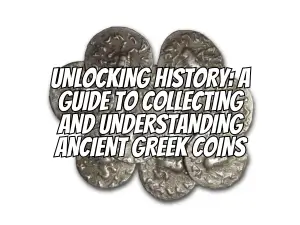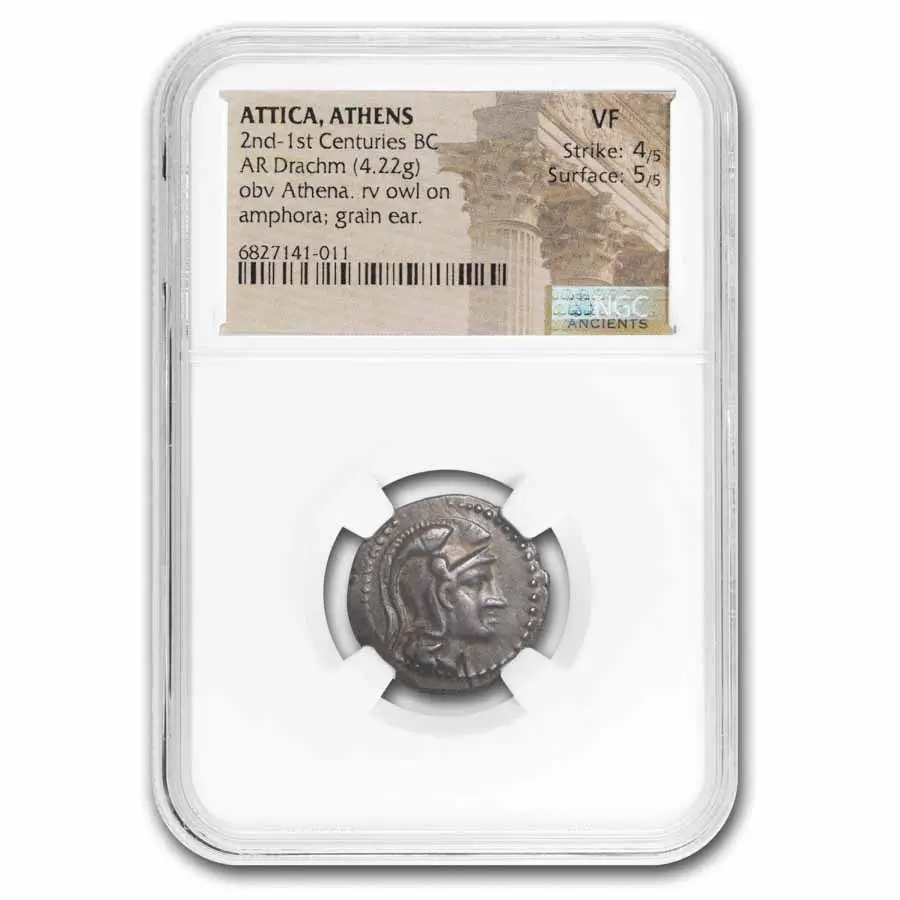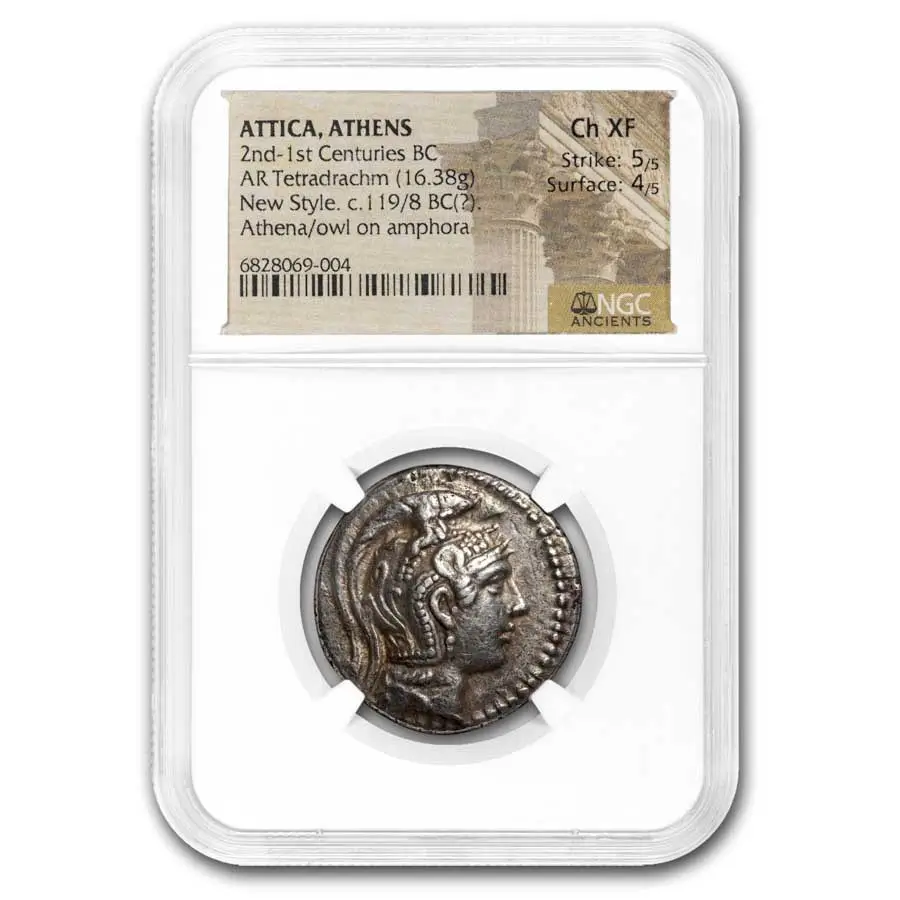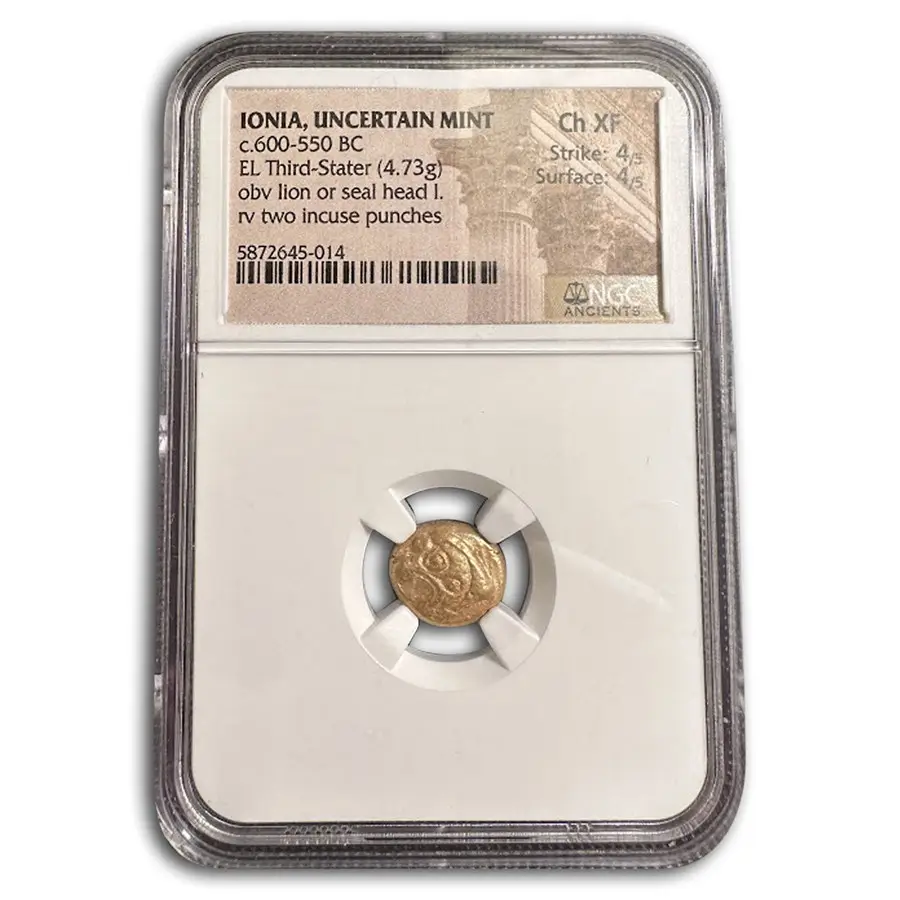It is impossible to talk about coin collecting without talking about Greek Coins. As one of the ancient civilizations, it is a crime not to talk about the coins of that era.
In this article, we will review everything you need to know about Greek coins so that at the end of this article, you have a basic understanding of whether you want to start collecting Greek coins.
KEY TAKEAWAYS
– Ancient Greek coins were more than just a medium of exchange; they represented the cultural and political power of the Greek city-states, and each coin tells a unique story.
– Greek coins reached a pinnacle during the Classical Greece period, a dynamic era characterized by a world comprising around 2000 city-states.
– The production of Greek coins involved exceptional craftsmanship, such as gold refining. Coins like the intricate Anatolian coins from King Kroisos’ reign marked significant evolutions.
– Greek coins, such as the Drachm, Tetradrachm, and Stater, took various forms. These coins, often designed with unique designs and symbols, were widely used and recognized during this classical period.
– Ancient Greek coins hold more than just monetary value. They are an opportunity to look into history. What happened in ancient Greece, shedding light on the time’s economic, political, artistic, and cultural aspects.
– Collecting ancient Greek coins (numismatics) is an enriching pursuit. It provides an in-depth understanding of the past and a touch of thrill in acquiring rare coins. Texts like Historia Numorum and Ancient Greek Coin Collecting provide valuable insights for collectors. Each coin carries a unique story and is a treasured artifact from a bygone era.
History of Ancient Greek Coins
Origins of Ancient Greek Coins

Diving deep into the origins, it’s clear that Greek coins are a genuinely ancient art that reached a pinnacle during the Classical Greece period.
This period, spanning from the Ionian revolt (500 BCE) to Alexander the Great’s death (323 BCE), was a dynamic era characterized by a Greek world comprising around 2000 city-states.
Each had a unique touch to their coin production, weaving an incredible tapestry of visual culture and a resonating testament to their independent identity and imagery.
If we talk numbers, their intrinsic value today, due to their rarity and historical significance, exceeds the value of the precious metal itself. They are now treasured as numismatic coins, fanning the flames of collectors’ interests worldwide.
Evolution of Ancient Greek Coins
Throughout the Classical period, the Greek coins underwent multiple transformations guided by the changing tides of culture, politics, and technology.
Not just a medium for economic exchange, coins became symbols of power, iconic figures, and beautifully encapsulated narratives of ancient Greece.

Among the Greek coins, one of the most prominent in the history of numismatics is the intricate silver coins from Athens, examples of high craftsmanship honing over centuries.
An important evolution to note is the process of gold refining, which contributed significantly to producing these historical treasures. This resulted in an ever-improving quality of coins.
The intricate Anatolian coins from King Kroisos’ reign marked the important wave of change, a paragon of exceptional detail and sophistication.
But that’s not all. A staggering range of coins, each embodying the story of their time, have also been unearthed.
| Coin | Estimated Value |
|---|---|
| Alexander the Great, AR Tetradrachm (90-75 BC) | $1500 |
| Alexander the Great, portrait head (323-281 BC) | $2000 |
| Amisos Pontos (88-65 BC) | $1500 |
| Amphipolis Silver Greek Tetradrachm (370 BC) | $2000 |
| Antigonos II Gonatas, Greek Macedonian King (277-239 BC) | $2000 |
Types of Ancient Greek Coins
In this section, we explore three essential types of Greek coins – the Drachm, Tetradrachm, and Stater – which were widely used and recognized during the classical period.
1. Drachm
Attica Athens Silver Drachm Owl (2nd-1st century BC) VF NGC
Originating from the silver mines at Laurion, the Drachm is one of the most iconic ancient Greek coins. Struck on the Attic standard, a single Drachm equaled a precise weight of 4.3 grams of silver.
The high purity and consistency of these coins elevated their status across Greece. A spirited emblem of the growing Athenian empire, the Drachm bore witness to Athens’ economic prosperity and rising power.
2. Tetradrachm
Attica Athens Silver Tetradrachm (2nd-1st century BC) Ch XF NGC
The Tetradrachm was essentially a larger denomination of the Drachm. As the name suggests, it held the value of four Drachms. With a weight of around 17.2 grams, the Tetradrachm became the monetary mainstay for major economies and large transactions during the classical era.
Perhaps the most well-known example of a Tetradrachm features an owl, symbolic of Athens – the city where it was first minted. The precise weight standard and purity of these coins played a significant role in their popularity for trading.
3. Stater
Ionia Uncertain Mint Elec. Third-Stater (c.600-550 BC) Ch. XF NGC
The Stater, a silver coin of substantial value, was yet another vital player in the ancient Greek coinage system. Three distinct weight standards were used for Staters; the Attic (based on the Attic drachma – 4.3 g), the Corinthian Stater (8.6 g), and the Aeginetan Stater (12.2 g).
Different city-states preferred specific standards, resulting in a myriad of coins across the Greek world. Significant cities such as Aegina, Corinth, and Athens each produced their unique forms of the Stater, often embossed with striking designs and symbols unique to their polis.
Ancient Greek coin production was filled with innovation and diverse designs showcasing the rich array of city-state cultures at the time. These coins facilitated trade and became a canvas for cities to express their identities.
Whether in the petite Drachm, the hefty Tetradrachm, or the valuable Stater, each coin offers a fascinating peek into the world of ancient Greece.
As we continue our exploration of ancient Greek coins, it becomes clear that these coins are not just historical artifacts. They are a testament to Greece’s rich history and technological advancements, carrying stories of a bygone era that continue to captivate us today.
Significance of Ancient Greek Coins
Ancient Greek coins hold great significance beyond their monetary value. They were a medium for propaganda, a reflection of cultural shifts, and markers of significant historical periods.
City-states could showcase their pride and establish their identity through the designs imprinted on their coins, often using popular figures or symbols associated with that city.
Reflecting on the rich historical significance, Parion, a coastal city in present-day Turkey, was known for implementing a city coinage system. These robust societal structures still fascinate modern historians, numismatists, and coin collectors.
An exemplar of such a coin, the Silver Drachm of the 5th century BC, is adorned with the image of a Gorgoneion. This imagery personifies Gorgon’s protective symbolism, warding off evil and promoting safe trade, journey, and life, a thought process prevalent during the era.
The adoption of coins by city-states like Parion was a testament to ancient Greece’s technological advancements. Minting coins requires knowledge of metallurgy and engraving. These coins’ sophistication and designs are a testament to the advances made in these fields during the classical period.
As we delve deeper into the myriad practices of the ancient Greeks, these coins serve as tangible glimpses of their everyday lives. They shed light on various aspects—economic, political, artistic, and cultural—staging a vivid panorama of an era long gone. These valuable artifacts continue to narrate stories of the ancient world, transporting us back to the streets of ancestral Greece.
Collecting Ancient Greek Coins
As a coin collector, it’s crucial to appreciate the rich tapestry of history woven into each Greek coin. Each piece emanates a unique story, an artistic representation, a political statement, and echoes of an economic system that once thrived.
Collecting these coins offers me a gateway into understanding the mysteries of ancient societies.




